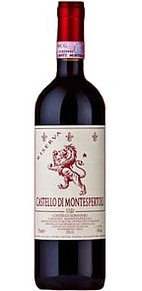BEST BARBERA WINE
Barbera is a red Italian wine grape variety that, as of 2000, was the third most-planted red grape variety in Italy (after Sangiovese and Montepulciano). It produces good yields and is known for deep color, full-body, low tannins and high levels of acid
Barbera is believed to have originated in the hills of Monferrato in central Piemonte, Italy, where it has been known from the thirteenth century. In the 19th and 20th centuries, waves of Italian immigrants brought Barbera to the Americas where the vine took root in California and Argentina among other places. Recent DNA evidence suggests that Barbera may be related to the French-Spanish vine Mourvedre.
Century-old vines still exist in many regional vineyards and allow for the production of long-aging, robust red wines with intense fruit and enhanced tannic content. When young, the wines offer a very intense aroma of fresh red cherries and blackberries. In the lightest versions notes of cherries, raspberries, and blueberries and with hints of blackberry and black cherries in wines made of more ripe grapes. Many producers employ the use of toasted oak barrels, which provides for increased complexity, aging potential, and hints of vanilla notes. The lightest versions are generally known for flavors and aromas of fresh fruit and are not recommended for aging. Wines with a better balance between acid and fruit, often with the addition of oak and having a high alcohol content are more capable of cellaring; these wines often result from reduced-yield viticultural methods.
The Barbera vine is very vigorous and capable of producing high yields if not kept in check by pruning and other methods. Excessive yields can diminish the fruit quality in the grape and accentuate Barbera’s natural acidity and sharpness. In Piedmont, the vine was prized for its yields and ability to ripen two weeks earlier than Nebbiolo even on vineyard sites with less than ideal exposure. This allowed the Piedmontese winemakers in regions like Alba to give their best sites over to the more difficult to cultivate Nebbiolo and still produce quality wine with Barbera that could be consumed earlier while the Nebbiolo ages. Harvest for Barbera usually takes place in late September-early October, usually two weeks after Dolcetto has been picked. In recent times, winemakers have been experimenting with harvesting Barbera later at higher sugar levels to produce heavier, more fruit-forward wines. In some vintages, these producers may even harvest their Barbera after Nebbiolo.[1]
Barbera can adapt to a wide range of vineyard soils but tends to thrive most in less fertile calcareous soils and clay loam. Sandy soils can help limit the vigor and yields. The grape rarely thrives in very alkaline or saline soils.
The Best Barbera Wine
Barbera is usually made into dry red wines which are basically table wines. Most barbera consumers will see the varietal barbera wine, sometimes blended with a small percentage of the French grapes cabernet sauvignon or merlot.
- Barbera d’Asti: Barbera d’Asti, a DOCG wine from the town of Asti, and Barbera d’Alba DOC, from the town of Alba and the surrounding area in the Piedmont hills, are the quintessential Barbera wines of Italy. Asti is thought to be slightly more delicate and feminine, while Alba barbaras should be aged a little longer to mellow their acidity. The “superiore” designation, for example in Barbera d’Asti Superiore, indicates at least 12 months of aging before release. The Nizza subzone of Asti, centered around the town of Nizza Monferrato, is the newest DOCG for barbera wines.
- Sparkling barbera: West of Piedmont, the wine region of Emilia-Romagna is home to a unique sparkling version of barbera that is similar to Lambrusco. It is produced in very small quantities and is rare to find outside of Italy. Look for wines labeled Colli Piacentini DOC. Another slightly sparkling (“frizzante”) barbera is produced in the Barbera del Monferrato DOC, but again, this wine is rarely exported.
Where Does Barbera Grow?
Barbera is a very vigorous, adaptable vine which can grow in various soils from calcareous clay to limestone to sand and can withstand hot climates. The grape’s naturally high acidity means that it can achieve full ripeness without tasting flabby or unbalanced by alcohol.
The majority of barbera is planted in Piedmont. Barbera ripens before the nebbiolo grape, which goes into Barolo, the long-aged king of Italian wine. Many Barolo producers also make a less-expensive barbera-based wine to drink, they joke, while waiting for the Barolo to mature. A few acres in other areas of Italy like Emilia-Romagna, Puglia, and Sardinia, are also devoted to growing barbera.
Because of its heat tolerance, New World growers have begun planting barbera grapes in warm wine regions like South Australia (for varietal wines), Argentina (as a blending grape), and in California’s Central Valley (for bulk wines) and Sierra Foothills (oaked varietal styles).
Wine Regions
As of 2010 there were 50,720 acres of Barbera planted, making it the sixth most widely planted red grape variety in Italy. In the Piedmont region Barbera is widely grown in Asti and Monferrato regions. While there is no officially defined Classico region, the region of the Asti province between the towns of Nizza Monferrato, Vinchio, Castelnuovo Calcea, Agliano, Belveglio and Rocchetta is considered among locals to be the “heart” of Barbera in Piedmont. In 2001, The town of Nizza was officially recognized as a sub-region within the greater Barbera d’Asti. Being one of the warmest areas in Asti, Nizza has the potential to produce the ripest Barbera with sugar levels to match some of the grape’s high acidity. The wines of Barbera d’Asti tends to be bright and elegant while Barbera d’Alba tends to have a deep color with more intense, powerful fruit.[5] In the Alba region, many of the best vineyard sites are dedicated to Nebbiolo with Barbera relegated to a secondary location, which limits the quality and quantities of the wines labeled with the Barbera d’Alba.
Beyond Italy
Outside of Italy, Berbera is rarely found in Europe except for small plantings in Greece, Romania, and the coastal region of Primorska in Slovenia.
The influence of Italian immigrants has led to a scattering of Barbera plantings in South America, in Argentina, Brazil, and Uruguay. In Argentina, it is widely grown with 1,061 hectares (2,620 acres) planted as of 2010, mostly in Mendoza and San Juan provinces, and used mostly for blending.
There are some small plantings in Israel.
Barbera has been grown in Australia for about 25 years in the Mudgee region of New South Wales, with later plantings in a number of wine regions, including the King Valley in Victoria as well as the McLaren Vale and the Adelaide Hills regions in South Australia.
South African producers have begun widespread plantings of the grape in the warm climate regions of Malmesbury, Wellington, and Paarl.
In the United States there are 4,693 hectares (11,600 acres) of plantings mostly in California, where Barbera is one of the most successful of the Piemontese grapes to be adopted in the state. It is widely planted in the Central Valley, where it is a blend component in mass-produced jug wines. In recent years, the fashion of Italian grapes has caused more California winemakers to look into producing high quality varietal Barbera.
What Kinds of Wines Are Made with Barbera?
Barbera is usually made into dry, still red wines. For Italian Vino da Tavola (meaning “table wine”), barbera will be blended with more tannic grapes from southern Italy to make cheap bulk wine. Most barbera consumers see on shelves, though, will be varietal barbera wine, sometimes blended with a small percentage of the French grapes cabernet sauvignon or merlot.
- Barbera d’Asti: Barbera d’Asti wine from the town of Asti, and Barbera d’Alba, from the town of Alba and surrounding area in the Piedmont hills, are the quintessential barbera wines of Italy. Asti is thought to be slightly more delicate and feminine, while Alba barbaras should be aged a little longer to mellow their acidity. The “Superiore” designation, for example in Barbera d’Asti Superiore, indicates at least 12 months of aging before release.
- Sparkling barbera: West of Piedmont, the wine region of Emilia-Romagna is home to a unique sparkling version of barbera that is similar to Lambrusco. It is produced in very small quantities and is rare to find outside of Italy. Look for wines labeled Colli Piacentini. Another slightly sparkling (“frizzante”) barbera is produced in Barbera del Monferrato, but again, this wine is rarely exported.
Barbera Wine, The Essence and Flavors
The barbera grape makes wines that are juicy and relatively light-bodied despite its bold, deep purple color. Barbera is extremely drinkable due to its refreshingly high acidity, low tannins, and moderate alcohol.
Barbera tasting notes often include:
- Strawberry
- Raspberry
- Red cherry
- Black cherry
- Blackberry
Barbera wines grown in Italy’s cooler areas can be more herbaceous and tart than those grown in warmer climes.
The Best Barbera Wine and Food Pairing
TOP MATCHES FOR BARBERA
Grilled and roast pork and wild boar
Steaks like hangar steak and onglet
Braised lamb dishes such as lamb shanks
Italian-style stews and braises such as rabbit with olives or braised duck
Italian-style sausages with lentils, or in a pasta sauce
Pizzas with a sausage topping
Pasta with meat and cooked tomato sauces such as bolognese. Spaghetti and meatballs
Meatloaf
Mushroom risotto
Meat-stuffed pasta such ravioli and agnolotti
Fonduta with truffles
Spicier stews with chili.
Flavors such as garlic, tomato and olives
Please order from our selection below or go to the main site for all our fine wine and spirits.
Pio Cesare Barbera d’Alba
Alessandro e Gian Natale Fanitino Barvera d’Alba Cascina Dardi Superiore 2016
Renato Ratti Battaglione Barbera d’Asti 2017
La Spinetta Barbera d’Asti Ca di Pian 2015
Terra d’Oro Barbera California 2017
Shadow Ranch Barbera Sierra Foothills 2016
Fontanafredda Briccotondo Barbera 2015
Cascina del Pozzo Barbera d’Alba Fossamara 2015
Pico Maccario Villa Della Rosa Barbera D’Asti
Ellena Giuseppe Barbera d’Alba 2015
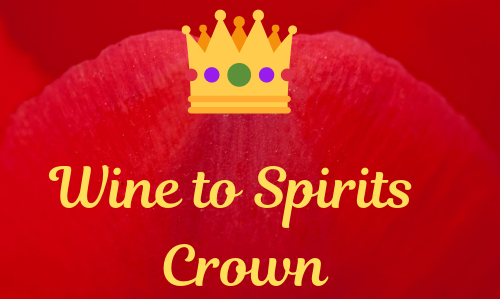





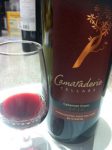

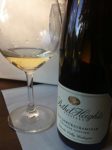
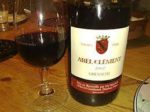
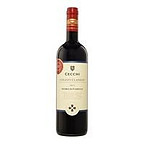 Cecchi Chianti Classico
Cecchi Chianti Classico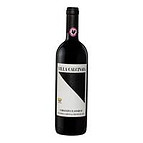 Villa Calcinaia Chianti Classico 2013
Villa Calcinaia Chianti Classico 2013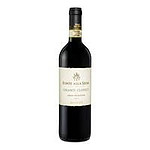 Fonte alla Selva Chianti Classico gran Selezione 2013
Fonte alla Selva Chianti Classico gran Selezione 2013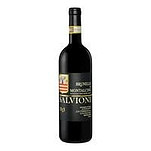 Salvioni Brunello di Montalcino 2013
Salvioni Brunello di Montalcino 2013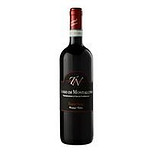 Terre Nere Rosso di Montalcino 2013
Terre Nere Rosso di Montalcino 2013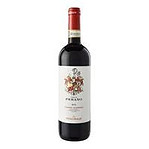
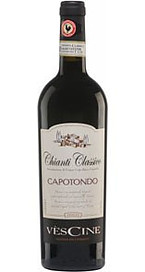 Vèscine Capotondo Chianti Classico 2
Vèscine Capotondo Chianti Classico 2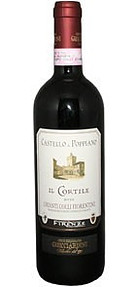 Castello di Poppiano Chianti Colli Fiorentini DOCG Il Cortile 2012
Castello di Poppiano Chianti Colli Fiorentini DOCG Il Cortile 2012
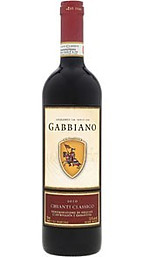 Castello di Gabbiano Chianti Classico 2012
Castello di Gabbiano Chianti Classico 2012